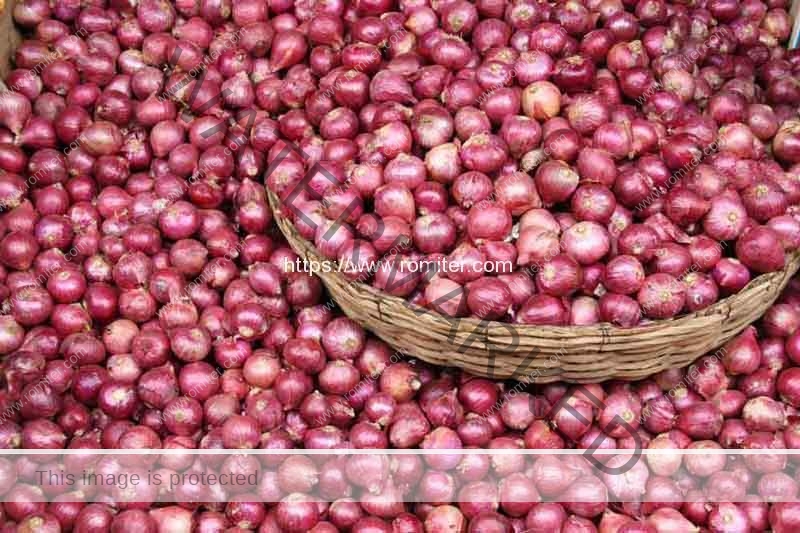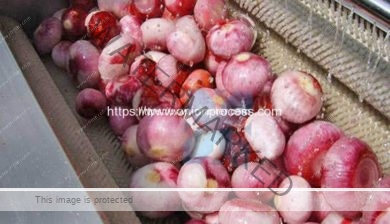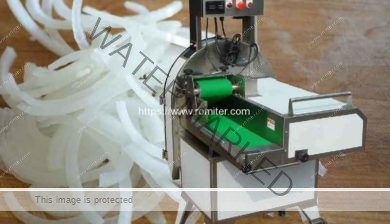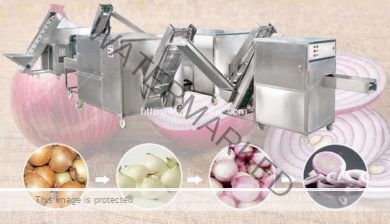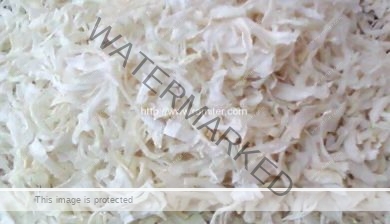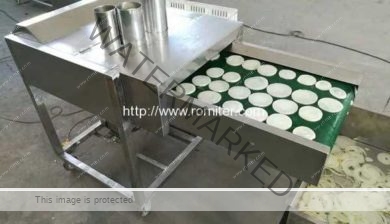The onion (Allium cepa L., from Latin cepa “onion”), also known as the bulb onion or common onion, is a vegetable that is the most widely cultivated species of the genus Allium. Its close relatives include the garlic, leek, chive, and Chinese onion.
This genus also contains several other species variously referred to as onions and cultivated for food, such as the Japanese bunching onion (Allium fistulosum), the tree onion (A. ×proliferum), and the Canada onion (Allium canadense). The name “wild onion” is applied to a number of Allium species, but A. cepa is exclusively known from cultivation. Its ancestral wild original form is not known, although escapes from cultivation have become established in some regions.The onion is most frequently a biennial or a perennial plant, but is usually treated as an annual and harvested in its first growing season.
The onion plant has a fan of hollow, bluish-green leaves and its bulb at the base of the plant begins to swell when a certain day-length is reached. The bulbs are composed of shortened, compressed, underground stems surrounded by fleshy modified scale (leaves) that envelop a central bud at the tip of the stem. In the autumn (or in spring, in the case of overwintering onions), the foliage dies down and the outer layers of the bulb become dry and brittle. The crop is harvested and dried and the onions are ready for use or storage. The crop is prone to attack by a number of pests and diseases, particularly the onion fly, the onion eelworm, and various fungi cause rotting. Some varieties of A. cepa, such as shallots and potato onions, produce multiple bulbs.
Onions are cultivated and used around the world. As a food item, they are usually served cooked, as a vegetable or part of a prepared savoury dish, but can also be eaten raw or used to make pickles or chutneys. They are pungent when chopped and contain certain chemical substances which irritate the eyes.
Common onions are normally available in three colour varieties. Yellow or brown onions (called red in some European countries), are full-flavoured and are the onions of choice for everyday use, with many cultivars bred specifically to demonstrate this sweetness (Vidalia, Walla Walla, Cévennes, “Bermuda,” &c.). Yellow onions turn a rich, dark brown when caramelised and give French onion soup its sweet flavour. The red onion (called purple in some European countries) is a good choice for fresh use when its colour livens up the dish; it is also used in grilling. White onions are the traditional onions used in classic Mexican cuisine; they have a golden colour when cooked and a particularly sweet flavour when sautéed.
While the large, mature onion bulb is most often eaten, onions can be eaten at immature stages. Young plants may be harvested before bulbing occurs and used whole as spring onions or scallions. When an onion is harvested after bulbing has begun, but the onion is not yet mature, the plants are sometimes referred to as “summer” onions.
Additionally, onions may be bred and grown to mature at smaller sizes. Depending on the mature size and the purpose for which the onion is used, these may be referred to as pearl, boiler, or pickler onions, but differ from true pearl onions which are a different species.Pearl and boiler onions may be cooked as a vegetable rather than as an ingredient and pickler onions are often preserved in vinegar as a long-lasting relish.
Onions are available in fresh, frozen, canned, caramelised, pickled, and chopped forms. The dehydrated product is available as kibbled, sliced, ring, minced, chopped, granulated, and powder forms.
Onion powder is a seasoning widely used when the fresh ingredient is not available. It is made from finely ground, dehydrated onions, mainly the pungent varieties of bulb onions, and has a strong odour. Being dehydrated, it has a long shelf life and is available in several varieties: yellow, red, and white

